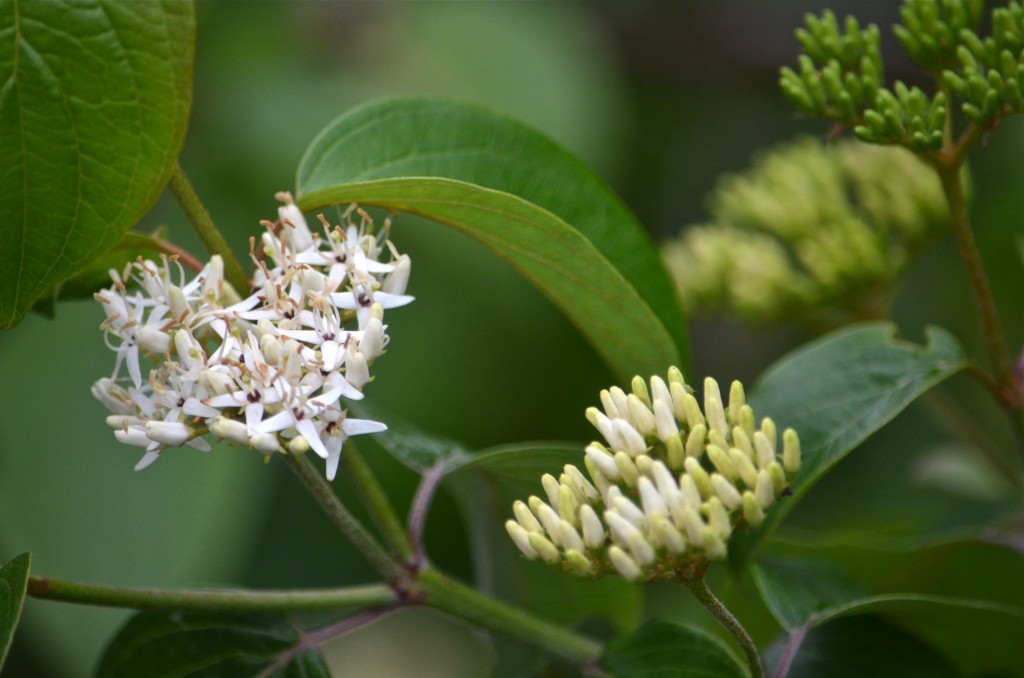 On the shore of Walker Pond. A favorite with butterflies. Will have blue/lavender berries. Dogwood familly.
On the shore of Walker Pond. A favorite with butterflies. Will have blue/lavender berries. Dogwood familly.
Silky Dogwood, Swamp Dogwood (Cornus amomum)

This is a small ground creeper. The species name repens refers to its trailing habit. Will bear red berries. The blossoms occur in pairs, and both must be pollinated to result in a single berry. Evidently people grow this in their gardens for the green leaves and red berries in winter. Native vine.
Partridge Berry (Mitchella repens)
A food plant for many insects. Sometimes cultivated for cut flowers, and longlasting in a vase! A tea made from the leaves was used as a laxative and to treat skin diseases. Has diuretic and fever-reducing properties. This plant was common in an area where I played as a kid and I remember how you could open its little dragon jaws. A species of toadflax native to Europe and Asia, and now common in North America.
Butter-and-eggs, Common Toadflax, Yellow Toadflax (Linaria vulgaris)
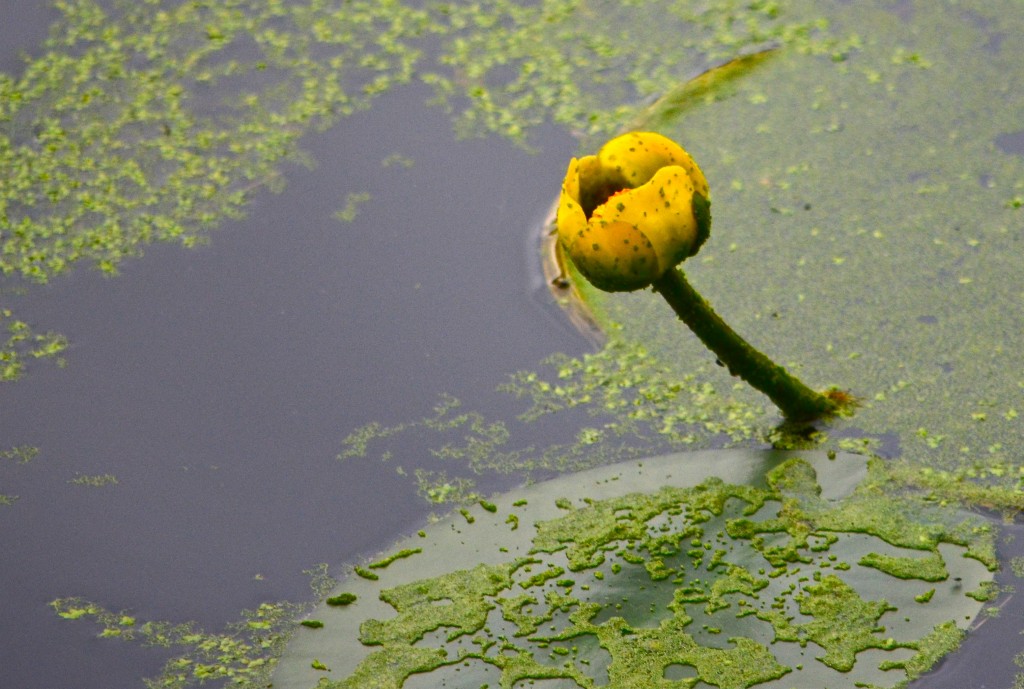 A rooted plant with floating leaves. In early spring the leaves are light green and below the surface, but by late spring they float on the water, and in summer, they often stand above the water. They have long horizontal roots in the lake’s sediments. The roots can be up to 6 inches in diameter and several feet long. The flower gives off a strong brandy-like odor that attracts insects.
A rooted plant with floating leaves. In early spring the leaves are light green and below the surface, but by late spring they float on the water, and in summer, they often stand above the water. They have long horizontal roots in the lake’s sediments. The roots can be up to 6 inches in diameter and several feet long. The flower gives off a strong brandy-like odor that attracts insects.
Many cultures ate the roots cooked or dried and ground into flour for baking. The seeds were ground or popped like popcorn. The leaves and roots were used for dyeing and tanning. Leaves used to stop bleeding! and the roots as a pain remedy. Seeds are eaten by birds, and muskrats and beaver eat the roots. Native.
Yellow Pond Lily, Spatterdock, Cow Lily, Bullhead Lily (Nuphar lutea)
Bonus picture: other denizens of the pond.
This is off the topic of wildflowers, but on the topic of local plants and growing seasons. We’ve bought a CSA share in The Dover Farm, which is pretty near here, and we just picked up our first bunch of chow (in the pouring rain). They had it in bins with signs: Take 1 bunch radishes, etc. Brian spread it out on the counter at home: two kinds of lettuce, japanese spinach, bok choy, kale, kohlrabi, scallions, radishes and garlic scapes. The salad that night tasted so crisp and interesting.
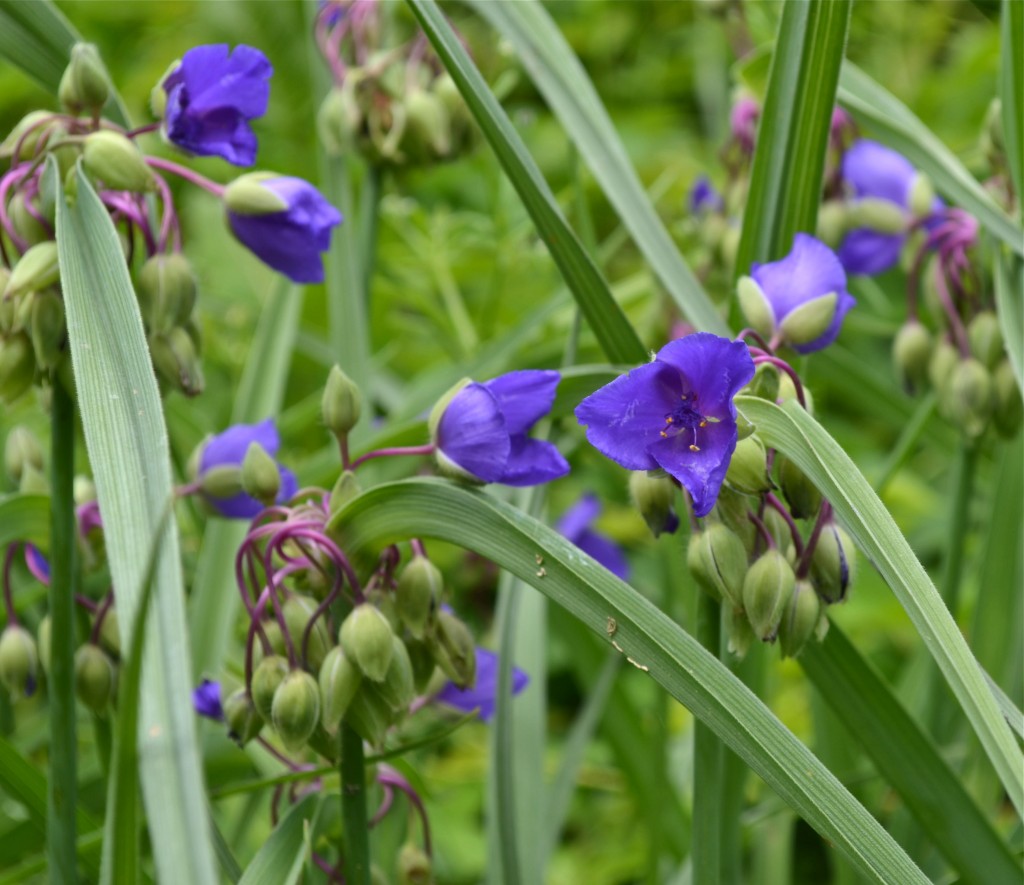 Each flower lives only one day, but each plant produces 20 or more flowers per stem. The sap has a viscous quality and can be stretched between your fingers like a thread of spider silk. Maybe this is where the name came from. Plus it’s also called Cow Slobber and I guess that could be related. The stems, leaves and flowers are edible, raw or added to stew. The flowers can garnish your salad! The spiderwort genus is named after John Tradescant, who was a gardener for King Charles I of England (1600-1649). Spiderwort seeds were brought back from the new world, and he planted them and popularized spiderworts. Love the curly purple stems.
Each flower lives only one day, but each plant produces 20 or more flowers per stem. The sap has a viscous quality and can be stretched between your fingers like a thread of spider silk. Maybe this is where the name came from. Plus it’s also called Cow Slobber and I guess that could be related. The stems, leaves and flowers are edible, raw or added to stew. The flowers can garnish your salad! The spiderwort genus is named after John Tradescant, who was a gardener for King Charles I of England (1600-1649). Spiderwort seeds were brought back from the new world, and he planted them and popularized spiderworts. Love the curly purple stems.
Spiderwort, Cow Slobber (Tradescantia sp.)
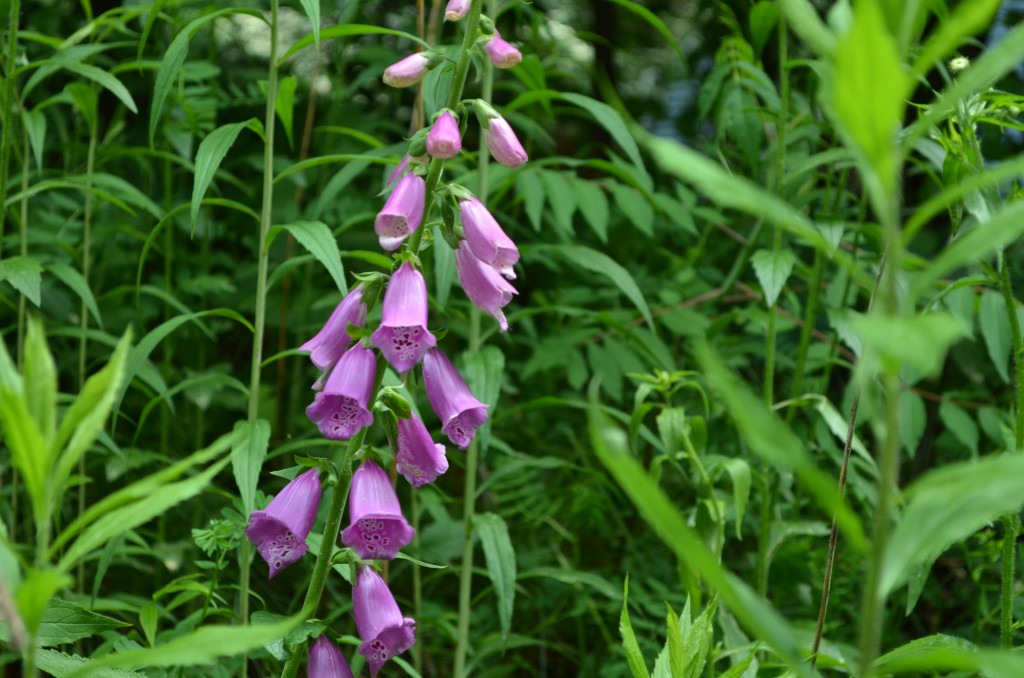
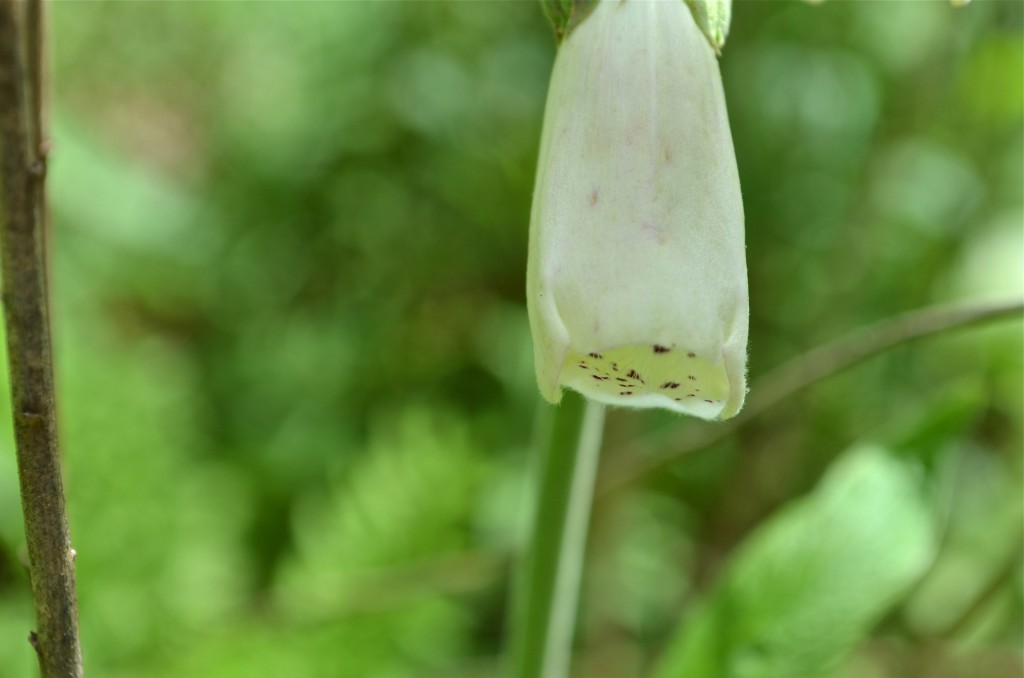 The scientific name (Digitalis) means “finger-like” and refers to the way the blossoms fit nicely on one’s fingertip. (What?) The entire plant is toxic, with the leaves of the upper stem being the most potent — can cause death! Also used for various cardiac-related drugs. Native to everywhere but here (Europe, Asia, Africa).
The scientific name (Digitalis) means “finger-like” and refers to the way the blossoms fit nicely on one’s fingertip. (What?) The entire plant is toxic, with the leaves of the upper stem being the most potent — can cause death! Also used for various cardiac-related drugs. Native to everywhere but here (Europe, Asia, Africa).
According to the 19th century book English Botany, Or, Coloured Figures of British Plants:
Dr. Prior, whose authority is great in the origin of popular names, says “It seems probably that the name was in the first place, foxes’ glew, or music, in reference to the favourite instrument of an earlier time, a ring of bells hung on an arched support, the tintinnabulum“… we cannot quite agree with Dr. Prior for it seems quite probable that the shape of the flowers suggested the idea of a glove, and that associated with the name of the botanist Fuchs, who first gave it a botanical name, may have been easily corrupted into foxglove. It happens, moreover, the name foxglove is a very ancient one and exists in a list of plants as old as the time of Edward III. The “folks” of our ancestors were the fairies and nothing is more likely than that the pretty coloured bells of the plant would be designated “folksgloves,” afterwards, “foxglove.” In Wales it is declared to be a favourite lurking-place of the fairies, who are said to occasion a snapping sound when children, holding one end of the digitalis bell, suddenly strike the other on the hand to hear the clap of fairy thunder, with which the indignant fairy makes her escape from her injured retreat. In south of Scotland it is called “bloody fingers” more northward, “deadman’s bells” whilst in Wales it is known as “fairy-folks-fingers” or “lambs-tongue-leaves”.
Common Foxglove (Digitalis)